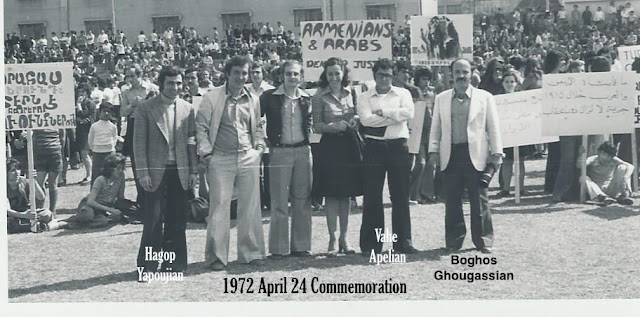Vahe H. Apelian
One of my greatest regrets in life is that I did not learn Arabic well enough to converse fluently and to get to know the rich Arabic literature, even though I was born and raised in Lebanon. There are many reasons for it and the matter is a subject for study, however in hindsight it is now. I can, with some certainty, state that it was the result of a fundamental fraught of my Armenian schooling. But that is an altogether a different matter.
Having said or stated it, it was natural that we absorbed many local urban sayings and used them. Among them is Aal Catalog عالكتالوك, which literary means, according to the catalog, where things are shaped and fabricated for you to choose. All you need to do is order from the catalog, like the many others who do the same.
There may have been reason for the expression Aal Catalog – عالكتالوك because ordering something from a catalog was practically nonexistent then. Evan my pants and shirts, up to my college years were tailor made. I remember one day, my classmate Nerses Festekjian and I, presented ourselves to our pharmacy school class wearing the same kind of pants with a distinctive color, tailored the same way. Both of us had our pants tailored by the same Armenian tailor in Wadi Jamil, where ARF community center was also located.
Aal Catalog عالكتالوك, saying came to my mind yesterday.
Let us admit that social media has become the dominant way of communication. Way before the social media era, I remember one year I went around from store to store looking for a graduation card that had Rudyard Kipling’s famous “IF” poem to mail to a friend's son congratulant him upon his HS graduation. His mother later told me that her son kept the card on his study desk for a long time. It was not uncommon then to look for an appropriate card a person liked to send for special occasions, such as graduation, birth, death, personalize the card, sign it and mail it. Gifting, be it choosing a card, is as much fun and meaningful as it is receiving it.
During those years it was also a cherished tradition to place the new year’s cards we received around the Christmas tree or on the chimney, or anywhere else for display. That too, seems to have mostly gone into oblivion.
The social media has spared, if not robed us from all that; from looking for a card, personalizing it, let alone mailing it. Gradually it has become more and more pervasive to congratulate, offer condolences through the social media.
But yesterday, I was astounded to realize that nowadays a person does not even need to type “congratulations” or express sentimental thoughts for the occasion by typing on the keyboard. It’s all there for you with different "trimmings". All you to do is click your choice and your “heart felt” sentiment is sent away.
Should you have received a picture evoking sentiments of a bygone time. You have choices to click, such as:
Should you want to congratulate, you have the option of choosing from those already prepared and packaged for you.
A friend commented that “it’s like having a chewed food.” I say, it’s like chewed food and regurgitated for other's use.
Another friend commented that she felt “bad for the new generation for their lives have become generic.”
Indeed, it is generic, prepared and packaged for our convenience with no "trademark". Sort of the "fast food" version of sentiments. In this new "brave" world, but in many ways impersonal world and yet connected world like never before, sentiments also appear to be packaged for the person much like an over the counter medication for quick fixes. Instead of being on a shelf, or displayed in a kiosk for your choosing, these are on your computer screen and a click away, à la Aal Catalog عالكتالوك.








.jpg)





